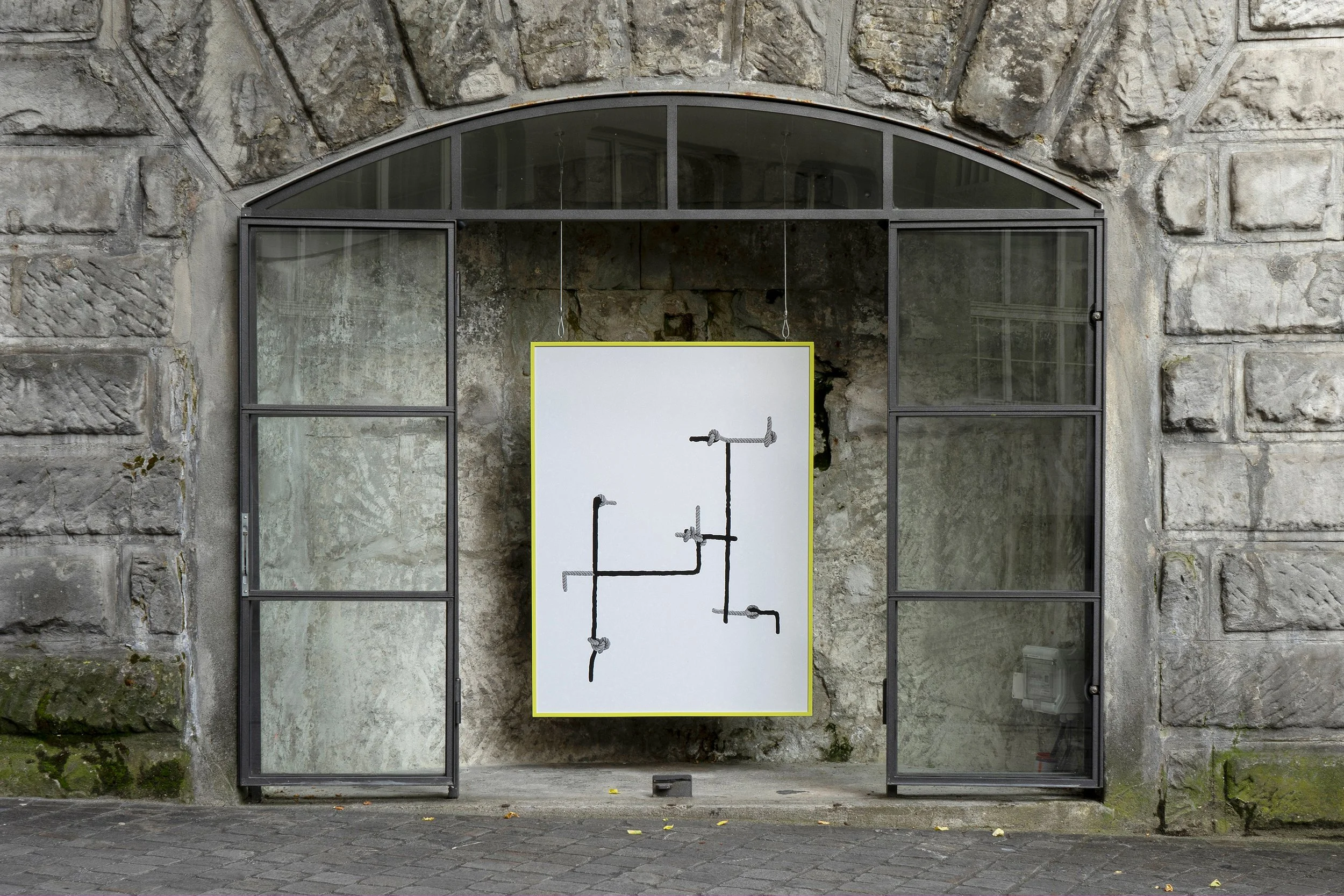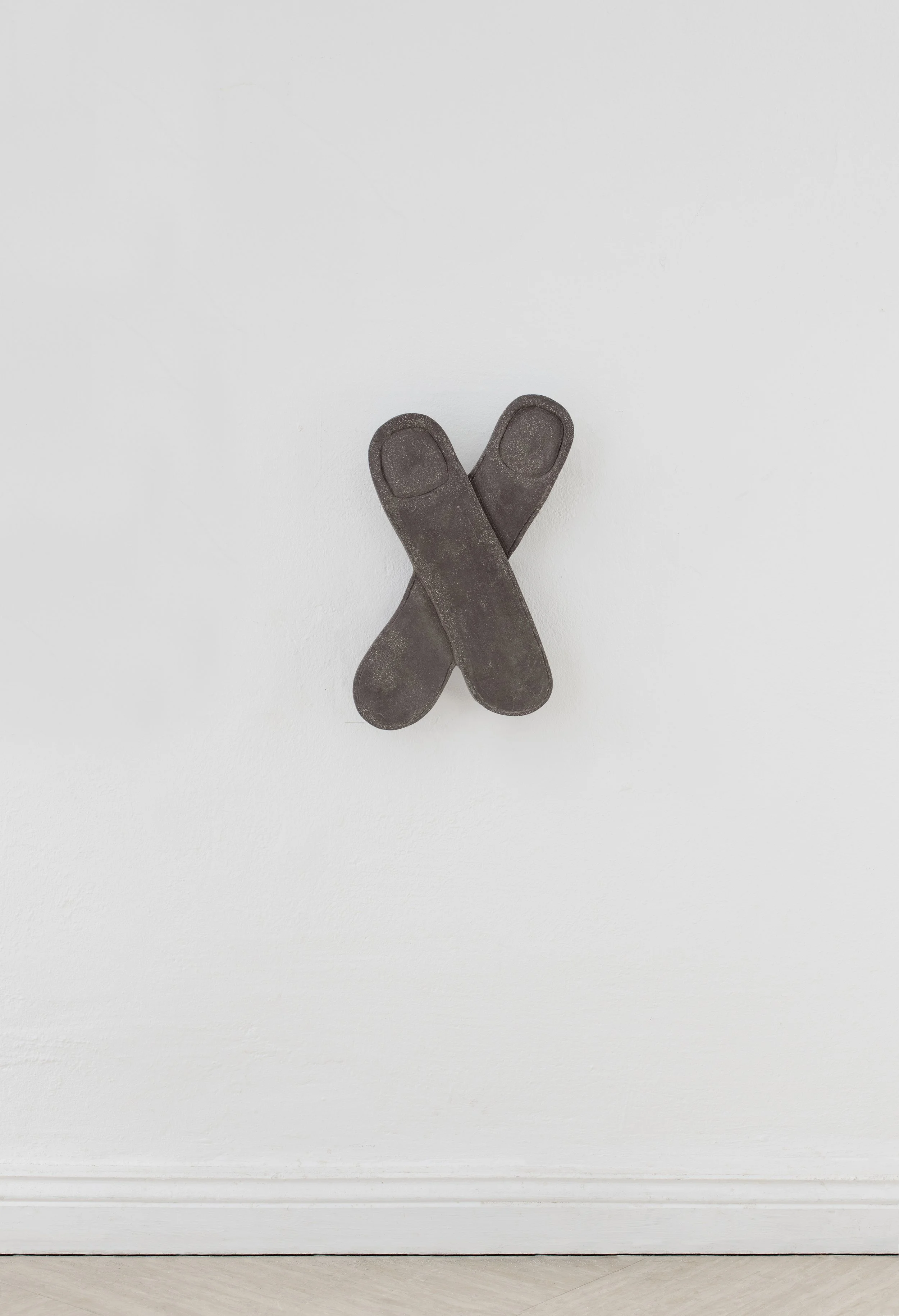Sophie Aigner

“I think one of the things I try to do in my work is to materialize the memories of such events or these ‘fixed points in life’ and thus keep them alive… Clay shows every little fingerprint, but at the same time is very stable and preserves the imprints for centuries after firing.”
Sophie Aigner is a Berlin-based artist whose multidisciplinary practice spans sculpture, photography, text, and artist books. Her work explores themes of memory, absence, and the fragility of daily life, often using clay, personal relics, and quiet humour to reflect on moments of transformation. In this interview, Aigner discusses the influence of autobiographical experiences, her fascination with material and gesture, and how writing and visual work intertwine across her evolving practice.
Could you tell us a bit about yourself and your background?
After graduating from high school, I studied fine arts at the Bauhaus University in Weimar for two years. Over the next 10 years I worked in very different artistic fields, for example I did a bit of acting for the German filmmaker Angela Schanelec, worked as a photographer and writer for books that were mainly about youth cultures, and for a while I designed stage sets for shows by the choreographer Antje Velsinger. Let's put it this way: I was really looking for a way to tell stories, in one way or another. Eventually I enrolled in an art program again, this time at the HFBK in Hamburg, where I studied sculpture+media with Thomas Demand.
My practice is mainly based on sculpture, photography and text. The different media often influence each other, for example as recently in my new artist book “Alright, it means something to me”. Here, among other things, I made ceramic brick sculptures, in which the handprint is still visible. I then created photomontages in which these bricks reappear – loosely connected to each other.
Many of your works explore absence and presence through carved voids, personal relics, and fragile materials. What draws you to these themes of loss and memory, and how do they guide your visual decisions?
I think the events that have influenced me the most so far have been the two births of my children and accompanying my father to his death. One of the things I try to do in my work is to materialize the memories of such events or these “fixed points in life” and thus keep them alive. I think it is an attempt to confirm my own existence, which sometimes feels intangible and fleeting. Maybe I started to deal with such themes in my master's thesis, which was dedicated to the excavations in Pompeii. I was particulary interested in the plaster casts made by the archaeologist Giuseppe Fiorelli at the end of the 19th century. After he and his team had discovered the negative casts of the deceased beneath the earth, he filled these cavities with plaster and thus made the postures visible. When I visited the archaeological site of Pompeii, I was able to empathize with this tragedy, and I think this happened because of the plaster casts that reflected familiar postures and turned on my body memory, so to speak. Then I began to write not only about this place of collective memory, but also about rediscovering a tape of a dear friend's voice that was recorded years ago, and ended up juxtaposing the collective memory with the personal. Regarding visual decisions: Lately I've been working a lot with clay, a very fragile, malleable material that shows every little fingerprint, but at the same time is very stable and preserves the inscribed information and imprints for centuries after firing. I think, for example, that this is a material that comes very close to my themes because of its characteristics and that's why I choose it.
Ende zu Ende
I want to carve the message in stone 9
I want to carve the message in stone 5
You also publish artist books alongside your sculptural and visual work. What draws you to the book format, and how does it influence or connect to your other pieces?
As I write a lot, I'm always looking for a way to publish these texts and combine them with visual works, especially as my works often complement each other or are created in parallel anyway. What I like about books is that it can be much more intimate to read a book than to see an exhibition, because you can take the book wherever you go and then read it on your lap on the couch at home, for example. I also like the rhythm with which you can work. Sometimes I make works only in relation to a book narrative, sometimes I combine series of works that I wouldn't combine in an exhibition. I think it's just a kind of medium that follows its own rules, and in the end it leads to new ideas for other pieces.
Some of your works include everyday body parts or strange objects that feel both funny and a bit serious. How important is humour in your practice, and what role does it play in how you share personal stories?
Maybe it's a way of dealing with a somewhat melancholic view of life or simply the fact that everything is constantly changing, which on the one hand is good because I can get bored easily, but on the other hand can be overwhelming. Also, our behaviours, thinking, our everyday life: all of that can be pretty weird, messy and quite contradictory. I think we are constantly looking for improvised solutions to somehow get by. Yesterday I saw a man walking his dog on a lead that was decorated all over with little flowers, smiley face stickers and ribbons. The dog seemed quite old and was limping along the street, which itself was full of garbage, cars and dust. I guess this was the man's way of adding a little fun to his daily routine.
Die lieben beiden 1
Die lieben beiden 4
Außendran II
Außendran 3
Tell us a bit about how you spend your day / studio routine? What is your studio like?
I work both at home and in my studio, usually half a day here, half a day there, which means: half a day all the digital things like writing/editing photos…, half a day analog stuff like sculpting/drawing… In general, I need a space where I feel at home, and I very much need a daily routine and, from time to time: a break to take a fresh look at the current work. Sometimes, a game of Candy Crush can be enough to create this kind of distance.
What artwork have you seen recently that has resonated with you?
Several works by the artist Helena Almeida.
Is there anything new and exciting in the pipeline you would like to tell us about?
I am currently working on a new book that deals with autofictional stories from the art world, with the working title “Drumherum” which means something like “all around”. In the fall, I will have a solo exhibition at Galerie Oel-Früh in Hamburg, where I will show a larger selection of works entitled “I want to carve the message in stone”. For this series I have engraved pictograms of body parts in reddish clay. And there will be another exhibition in a former public toilet block in Berlin, the Kunstbrücke am Wildenbruch. In this duo exhibition with the artist Clara Bahlsen, I will show some washbasins made of clay on steel frames. Questions dealing with bodily functions are engraved into the bottom of these basins, inspired by the social platform “gutefrage.de“ (means “goodquestion“, similar to “answers.com“) – for example something like: Why do I spit yellow particles?
All images courtesy of the artist
Interview publish date: 23/07/2025
Interview by Richard Starbuck






